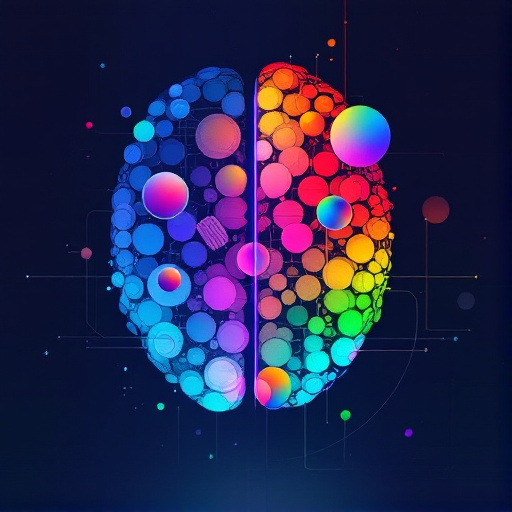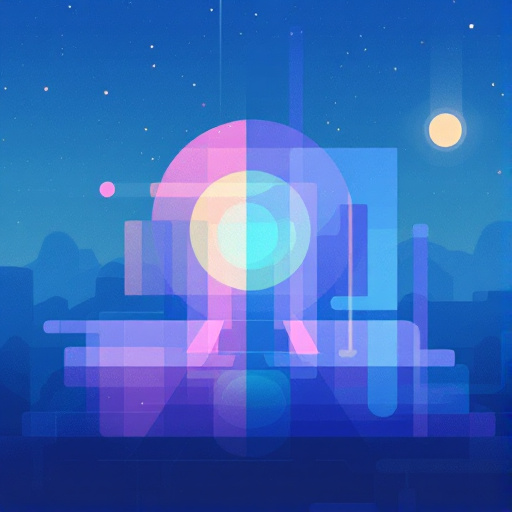Featured Articles
- From Doodles to Dashboards: The Rise of Handmade UI Elements in Professional Web Design
- Invisible Design: How Micro-Interactions Shape User Experience in Unexpected Ways
- The Art of Failure: Designing UI for User Rejection and Forgotten Experiences
- The Hidden Impact of Microinteractions: Small Details, Big User Experience on Website UI
- The Hidden Psychology: How Color Choices in UI Can Evoke Unexpected User Emotions
The Hidden Psychology: How Color Choices in UI Can Evoke Unexpected User Emotions
The Hidden Psychology: How Color Choices in UI Can Evoke Unexpected User Emotions
Color is more than just an aesthetic choice in user interfaces (UI); it can dictate the emotions users experience when interacting with digital products. This article explores the intricate psychology behind color selection in UI design, how it influences user behavior, and some surprising stats and case studies along the way.
Understanding Color Psychology
Ever wondered why fast-food restaurants often use red and yellow in their logos? That’s not just coincidence. Certified color psychologist Angela Wright noted that red can evoke excitement and urgency, while yellow promotes a sense of happiness and optimism. It’s like a psychological cheat code, influencing behavior in ways we often overlook.
Statistics that Speak Volumes
Did you know that color increases brand recognition by up to 80%? According to research conducted by the University of Loyola, Maryland, colors can significantly impact brand perception and recognition. This statistic isn’t just an abstract figure; it emphasizes the power of color in marketing and design decisions. For example, banks often utilize blue tones, associated with trust and security, to encourage users to deposit their hard-earned savings. It’s no wonder why many tech giants lean towards blue in their branding. Microsoft, Facebook, and IBM all utilize this calming color.
The Emotional Spectrum
When designing a user interface, thinking beyond just aesthetics is crucial. Color influences our perceptions and decision-making without us actively recognizing it. Red can ignite urgency or aggression, while blue tends to soothe. That’s why e-commerce websites sometimes use countdown timers in red, such as clearance sales. They trigger a ‘now or never’ feeling, pushing users to complete a purchase before it's too late—and trust me, there’s a psychological reason behind it.
Colors and Generations
Interesting fact: different generations respond to colors differently. For instance, a recent survey done by Mailchimp indicates that millennials often gravitate towards brighter colors that evoke fun and excitement. In contrast, baby boomers might prefer softer tones or neutrals that suggest stability and sophistication. So when designing a UI aimed at a multi-generational audience, it's essential to strike a balance that resonates across age groups.
Case Study: AirBnB
Let’s take a closer look at AirBnB’s design approach. When they revamped their website and app in 2014, they focused primarily on the color palette, shifting towards warmer tones like peach and soft blues. The outcome? A more inviting and friendly feel that resonates with users looking for a comfortable space to stay. They wanted users to feel at home in a digital space—and it worked! Reports indicated a significant increase in traffic and bookings following the redesign, showcasing the impact of thoughtful color choices.
Why Contrast Matters
Ever tried to read light gray text on a white background? Frustrating, right? High contrast is not just about aesthetics; it plays a vital role in readability and user experience. According to accessibility guidelines, sufficient contrast between background and text colors is crucial for users with visual impairments. Websites and apps that prioritize contrast often see lower bounce rates and higher engagement. When developing a user interface, it's essential not just to consider how colors look but how they function.
Conversational Style: Don’t Just Wing It!
Alright, so let’s have a chat. Most of us just jump on Canva or Photoshop and pick whatever color we think looks nice, right? But what if I told you that the hues you choose could either uplift or repel your users? Sure, cyan might look trendy in that cute app you’re designing, but without considering your audience’s emotional reaction, you might be shooting yourself in the foot. Take a pause. Do some research. Understand the ‘why’ behind every shade. Remember, it’s not just about what you like; it’s also about what resonates with your users.
Color Choice and Its Impact on Conversion Rates
In the competitive landscape of online commerce, every detail counts. A study by HubSpot found that changing a call-to-action button from green to orange increased conversions by 21%. This change was subtle but crucial, showing that even the smallest shift in color can make a significant difference. This reinforces just how vital color selection is in web design—an aspect that should never be overlooked.
Real-World Examples of Color in UI
Let’s look at well-known brands, such as Instagram, which use a colorful gradient that signifies creativity and fun. Initially, Instagram’s design was simple and monochrome, appealing to a minimalistic vibe. However, their gradual shift to a colorful interface helped them tap into a more youthful and vibrant audience. As a result, user engagement soared, and their active users skyrocketed. Could this have anything to do with their playful color palette? Absolutely!
Color Trends: The Current Landscape
At 25, I find myself constantly amazed at how rapidly color trends change in digital design. One moment, muted pastels are all the rage; the next, vivid colors dominate the conversation. According to Adobe, the emerging concept of “digital nomadism” has led many brands to adopt colors that evoke a feeling of wanderlust. Think sunrise orange and ocean blue—colors that spark joy and adventure. These trends can rapidly shift, impacting user perceptions and expectations, and as a young designer, it's a thrilling time to explore these nuances.
Integrating User Feedback
Another effective way to ensure your color choices positively impact user emotions is to gather feedback. Beta testing with a diverse audience can provide invaluable insights into how users feel about your color schemes. User testing sessions often reveal emotional responses that can help designers fine-tune their UI effectively. Google’s Material Design, for instance, is routinely updated based on user feedback, allowing them to adapt to modern aesthetics and maintain user satisfaction.
Creating a Color Strategy
So how does one craft a thoughtful color strategy? Start by defining your brand identity. What are your brand values? Who's your audience? Once you establish a clear direction, select a palette that embodies those characteristics. Additionally, create a mood board or consider using tools like Adobe Color or Coolors to visualize your options. Remember, consistency in color usage across platforms reinforces brand recognition and trust, which is essential for building a loyal user base.
The Future of Color in UI Design
As we look to the future, one thing is certain: color will continue to play an essential role in shaping user experiences. Advancements in technology will likely introduce new ways of communicating emotions through color—think adaptive-color interfaces that change in accordance with user preferences. It’s fascinating to consider how these innovations will impact our emotional experiences in a digital space.
Final Thoughts
Understanding the hidden psychology of color in UI design is a critical component that can significantly influence user engagement and satisfaction. By thoughtfully choosing colors that resonate with your target audience, you can evoke desired emotions, establish brand identity, and ultimately drive user conversions. So, the next time you’re faced with a color choice, remember: it’s more than just a shade; it’s an emotional experience waiting to unfold.




